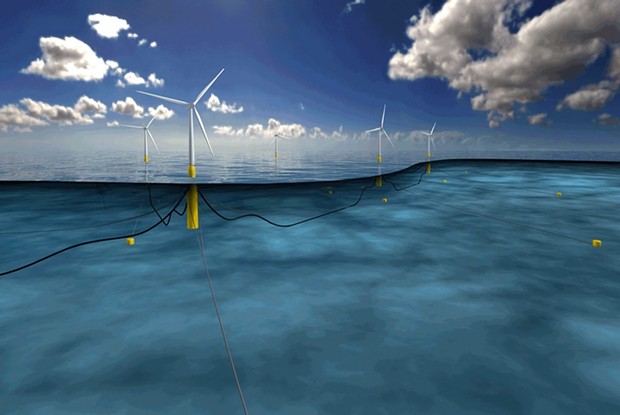[
{
"name": "Top Stories Video Pair",
"insertPoint": "7",
"component": "17087298",
"parentWrapperClass": "fdn-ads-inline-content-block",
"requiredCountToDisplay": "1"
}
]
I appreciated the Journal's thoughtful editorial on energy use and offshore wind project proposed for Humboldt County ("Our Last Best Chance," April 11).
Yet in ongoing "green power" debates, one important fact is consistently left out: In large part the energy produced by these projects will not supplant dirty energy, but supplement it.
According to the U.S. Energy Information Administration, national energy production has increased nearly every year, from about 40 quadrillion British thermal units in 1960 to 103 quadrillion BTUs in 2022. In February this year, the EIA estimated that U.S. energy consumption will reach 4,112 billion kilowatt hours in 2024 and 4,123 billion kwh in 2025, up from a record 4,070 billion kwh in 2022.
What this means is that little of the energy produced by "green" energy technologies will serve to reduce the U.S. carbon footprint by 2050. Yet these projects come with enormous environmental costs.
Wind installations offshore of Humboldt County will impact already suffering marine life, according to federal planning documents. This is a Faustian bargain. Whereas climate change is clearly an overarching threat to all life on planet Earth, our ongoing destruction of biodiversity — the webs of interconnected life that allow everything from insects to humans to exist here at all — is an equal threat.
Onshore, massive energy transmission corridors will slice through already despoiled forestlands, disrupting wildlife and threatening to produce even more wildfires. All that new power will also allow energy-hungry industries to occupy fragile local habitats. Such industries could include data centers, which are growing exponentially across the U.S., especially as AI technologies demand 10 times the computing power of regular internet. Companies that own data centers (Google, Amazon, Meta, etc.) like to locate them in areas with cool climates (check), lots of fresh water for cooling (check) and the availability of immense amounts of electricity (check?).
The wind port facility is being designed to also accommodate freight, meaning that local roads could become choked with diesel-spewing heavy trucks taking goods to markets in all directions.
The words we almost never see in these debates are reduction of use. The only path forward for humanity, and the planet, is to retreat from our failed experiment of massive energy production and consumption. Government and industry must lead the way to deindustrialize how we live — which is unfortunate, because both government and especially industry have utterly failed us, and the planet, in this regard. The current doubling down on expansions of industry and corporate wealth at the expense of everything else is unlikely to abate in such hands.
If we're looking for stopgap energy measures, we would first decentralize energy production and create a Marshall Plan to cover every rooftop and parking lot in the U.S. with solar panels. We don't see such a Marshall Plan because it would also threaten to decentralize profits. For instance, after declaring bankruptcy (following deadly fires caused by faulty energy transmission lines) and spiking energy rates, last year PG&E recorded $2.2 billion in profits. All of this income is "earned" through destruction of habitat and biodiversity.
It's a misnomer that by embracing offshore wind power Humboldt County will be "doing its part" to make a dent in climate change. The opposite is true. Until government and industry authentically lead the way toward significantly reducing energy consumption in all sectors, local residents must oppose all new giant energy installations that threaten to severely impact habitat in our area. This is our calling today, for our survival tomorrow.
Greg King is executive director of Siskiyou Land Conservancy. His new book is The Ghost Forest: Racists, Radicals, and Real Estate in the California Redwoods.
Comments
Showing 1-1 of 1
































